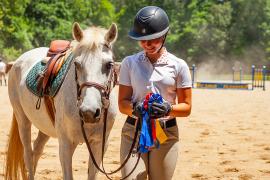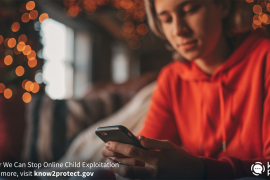Guest post by Katie Johnson
As a product of camp, I have always assumed to know a lot about kids, youth development, and, well — parenting. But then, it happened. I became a parent myself. Like most first time parents, I went into the experience with naïve theories on just about everything. The ideas of Richard Louv, Michael Thompson, and Wendy Mogul danced in my head — my child would be connected to nature, skinning his knee would not be an epic crisis, TV was not going to be his babysitter, and his time would not be consumed with structured activities and strictly-supervised schedules.
Fast-forward 5 years — 5 years of two parents working, juggling childcare, preschool, swim lessons, and travel schedules. Add in one-cross country move and the fact that we ARE actually living in the 21st century with e-cards, e-books, e-mail . . . e-everything. And, well, the truth is this: My child does watch TV. He knows how to work the iPad. At one point in time this past winter, schedules overlapped, and he was attending preschool, soccer, basketball, and swim lessons all within the same week. And the first time he skinned his knee, I was ready to call in for an air-lift to the local hospital.
And while I am confident that he does spend more time outside and has less screen time than the average 5 year old in the US, I find myself trying to justify my decision when I say “yes” to the TV or iPad, as if Richard Louv were standing in the room with me. But then I had a moment in which I realized it was all going to be okay. That perhaps I had been able to strike the balance between the e-world in which we live in and the connection to the outdoors that I so want my child to have.
While attending an event at his preschool, I turned and saw my son nestled under the branches of a giant Western Red Cedar with three other children, playing. Playing house, in fact. But there was no doll. The sticks were their props. They had created their own story, their own rules, and their own world. Through the sweeping branches of that cedar, a world had been created by this group of 4- and 5-year-olds that did not need adults. They played all day in this forested corner of the school. As I sat and watched from a distance, I smiled with pride, knowing that this was “it”. This is what we had been striving for. They were playing — pure and simple. No adults directing or structuring their activities, no electronics filling in the spaces for them. Turns out I had not destroyed my son’s young mind with television.
I was reminded at this moment that doing “nothing” is okay. That even though there is this unwritten pressure to structure our kids’ lives, to keep them at the head of the class or the best on the team, there also needs to be a balance of unstructured time. Because doing nothing allows the doors of creativity and imagination to open in a child’s mind. Paper towel tubes become marble tracks, cardboard boxes become the foundation of forts, and the space under a cedar tree becomes a family home.
Parenting is not a perfect science and no parent is perfect. But with everything in life, we must always strive to find balance and it is our role as parents to help our kids find that balance. So while my son will learn discipline and sportsmanship through team sports, he will also learn how to problem solve and collaborate through free, unstructured play. The value of free play has somehow been lost in this e-world, but it is just as important in the development of the 21st century child as anything else. Free, unstructured play allows for the development of creativity, imagination, visioning, independent thinking, collaboration with peers – and so much more. These are the qualities that we want to develop in our kids. So the next time your child says, “I’m bored”, challenge yourself to not turn on the TV or hand them the iPad — I know that I will. Send her outside or give him a cardboard box . . . and then step away and wait for the magic to begin.
Katie Johnson is the executive director of ACA, Southeastern.
Photo courtesy of Katie Johnson
The views and opinions expressed by contributors are their own and do not necessarily reflect the views of the American Camp Association or ACA employees.



